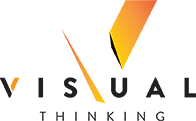
SUSTAINMENT: PREPARE FOR IT!
To be complete, a company’s journey to a fully-functioning visual workplace must address information deficits on every level of the enterprise, including office and support functions. In most companies, this process can span two to five years. Yet with a nearly-guaranteed productivity increase of 15% to 30% (in offices as well) and robust cultural alignment as prime built-in outcomes of workplace visuality, it’s well worth the investment of time, money, and hope.
In the final segment of this four-part series, we pull back and examine the premise underlying our discussion: that it’s well worth preparing your company for a successful transformation—whether you begin with visual, begin with lean, or begin with 5S. Build in your sustainment. The fact is, the rush to launch any of these improvement protocols without prep and planning has forced far too many companies to face down blocks and barriers that could have been resolved in advance. I named three, one for each of the first three previous issues:
Block One: No TIME for improvement has been set aside, by policy, to support the change management says it wants. Instead, time is grudgingly found.
Block Two: Sharing POWER with value-add associates is not named as a core value of the change, is therefore not operationalized, and so cannot be part of the company’s sustainment equation.
Block Three: SUPERVISORS are not provided with a core role in the improvement process and are often marginalized instead.
As a result, business and industry is littered with companies that have attempted to bulldoze their favored change into place, usually through mandated requirements. For example, lean may be pursued through an aggressive blitz schedule, without paying heed to problems that can erupt when improvement is based exclusively on arranged events and not on cultivating a new way of continuous thinking.
5S can suffer a similar fate when it used strictly as a compliance mechanism, ordered into place, organized around blitzes, and audited within an inch of its life (and yours). Creativity is not trained in, promoted or prized—no value is set on the power of the individual to contribute to the company’s business case through improvement.
Visuality will also under perform if we stuff it into a box of standardized outcomes that promote uniformity to the exclusion of functionality. In such cases, the term “functionality” is rarely, if ever, used or taught. The outcome is the same as the other two—lean and 5S: the results are auditable but do not grow because they cannot. They are unsustainable.
No improvement paradigm can take you any distance to enterprise excellence if it has not taken into account and addressed those three factors: Separating time for improvement from production time; sharing power with value-add associates—the power to think, invent, and implement; and developing a new role for supervisors, so they become, as I put it, leaders of improvement.
Start by understanding that sustainment is an effect, not a cause—the result of preparation and decisive planning that ensures the above three elements are not just in place but a central part of the transformation itself. Make no mistake: we have to learn how to do that. It does not come naturally—or naturally enough. The result? Results that last.
Think about this. If you are in the planning stages of a launch, then fold in the three factors right now. If you are well into your rollout and realize adjustments are needed, make mid-course corrections. Either way, there’s plenty of time. Do it now. That’s what time is for: to correct our errors so we can move forward together with confidence, good will, and effectiveness. Sustainment: Prepare for it.




